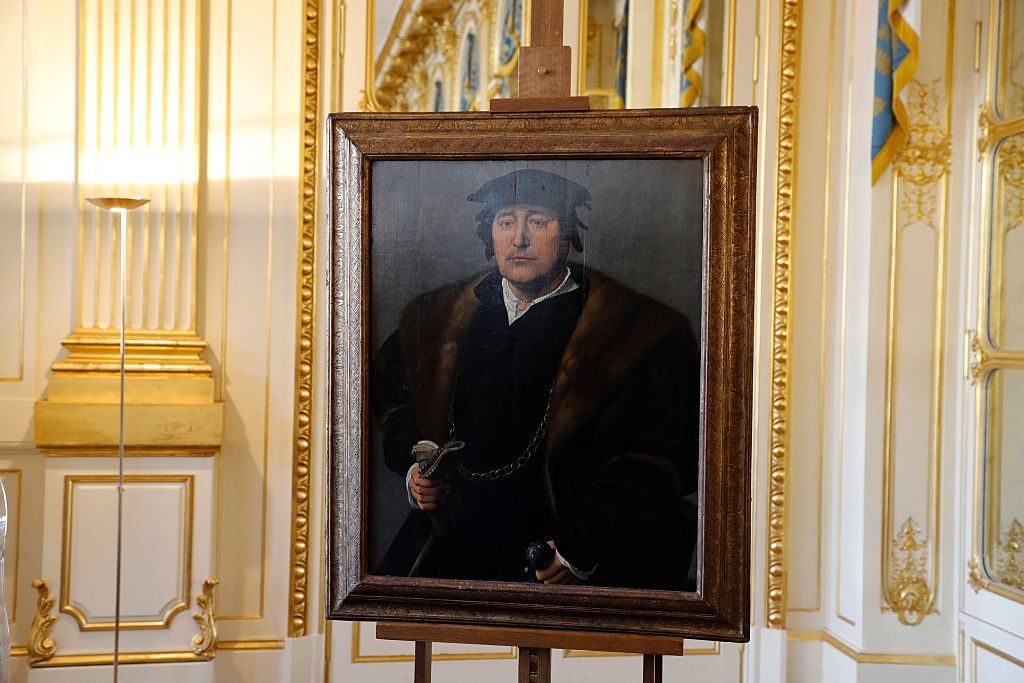Law & Politics
France Restitutes Flemish Portrait to Descendents of German-Jewish Couple
France is ramping up its restitution efforts.

France is ramping up its restitution efforts.

Alyssa Buffenstein

France has returned a portrait by Joos van Cleve to the grandchildren of a German-Jewish couple who were forced to sell the painting in the 1930s, reflecting a renewed effort by the French government to find the rightful owners of more than 2,000 artworks that were looted or forcefully sold during World War II, and whose ownership still remains in limbo.
Henrietta Schubert, the granddaughter of Hertha and Henry Bromberg, who originally owned the painting, was tracked down by genealogists. She told the Associated Press that she thought she was being scammed when lawyers first told her that her grandparents had once owned the painting. But she and her cousin Christopher Bromberg received it in Paris on Monday, a symbol of healing wounds.

“Portrait d’homme” by Joos Van Cleve, at the restitution ceremony in Paris. Photo courtesy Francois Guillot/AFP/Getty Images.
The Flemish portrait, which depicts a man of high status in a black robe lined with brown fur, is dated to the 1530s or 1540s, and attributed to Joos van Cleve of Antwerp, or his son Cornelius. It was acquired by Martin Bromberg at a Berlin auction in 1912, and passed down to his son, Henry. Henry and his wife, Hertha, fled Germany in the late 1930s, and en route to the United States, they sold the painting in 1938 in Paris, where it began a long and dangerous wartime journey, reported by the New York Times.
The painting changed hands multiple times between 1938 and 1941, when a German dealer sold it to Hitler’s Reich Chancellery. It was intended to hang on the walls of the Führermuseum, a planned but unrealized art gallery in Linz, Austria, where Hitler wanted to create Europe’s new cultural capital and display Nazi-looted art.
Instead, it was sheltered in mines near Salzburg until 1945, when it was found by Allied troops. In 1950, the painting was brought to the Louvre, where it stayed for ten years, before heading to the Musée des Beaux-Arts in Chambéry.
The French government has been making efforts to restitute more than 60,000 artworks since the end of World War II, but around 2,000 artworks were considered “orphaned,” and stored and displayed in French museums.